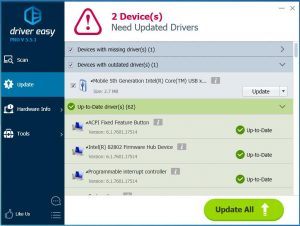
A single connector solution brings VR to small form factor devices that can accommodate a single, small footprint USB-C connector (such as a thin and light notebook) rather than today’s VR infrastructure which requires a PC that can accommodate multiple connectors. In addition to easing the setup hassles present in today’s VR headsets, VirtualLink will bring VR to more devices. See more Reply Save Like 1 - 9 of 9 Posts spunk.

This was one of the most bizarre computer problems I've encountered. To this date i've tried: Installing newest drivers from. After re-flashing again with the same BIOS firmware. 1 Hi everybody, so only my usb 3.1 port is working due to error in the title, my mobo is asus z370-f (version 0612), i7 8700k cpu. In comparison, USB-C only supports four lanes of HBR3 DisplayPort OR two lanes of HBR3 DisplayPort + two lanes SuperSpeed USB 3. EDIT: OK I found the culprit It was indeed a bad flash.

VirtualLink simultaneously supports four lanes of High Bit Rate 3 (HBR3) DisplayPort along with the SuperSpeed USB 3 link to the headset for motion tracking. VirtualLink employs a new alternate mode of USB-C, designed to deliver the power, display, and data required to power VR headsets through a single USB-C connector. VirtualLink has been developed to meet the connectivity requirements of current and nextgeneration VR headsets. VirtualLink is a new open industry standard that includes leading silicon, software, and headset manufacturers and is led by NVIDIA, Oculus, Valve, Microsoft, and AMD. To address this issue, Turing GPUs are designed with hardware support for USB Type-C™ and VirtualLink™. Headset manufacturers need to accommodate the cables, complicating their designs and making them bulkier. The number of cables can be uncomfortable for end users and limit their ability to move around when using the headset. Your motherboard chipset + 2 RENESAS uPD72010 USB 3.USB-C AND VIRTUALLINK Supporting VR headsets on today’s PCs requires multiple cables to be connected between the headset and the system a display cable to send image data from the GPU to the two displays in the headset, a cable to power the headset, and a USB connection to transfer camera streams and read back head pose information from the headset (to update frames rendered by the GPU). G.Skill Ripjaws X Series 16GB (4 x 4GB)DDR3-1600

Intel doesn't provide one for Windows 8 and the drivers obtained from Gigabyte website fail to install saying the "System doesn't meet minimum Requirements." I have uninstalled "Intel(R) USB 3.0 eXtensible Host Controller" several times. Check with your computer manufacturer for a updated firmware for the controller" In Device Manager I get a yellow trangle on "Intel(R) USB 3.0 eXtensible Host Controller - 0100 (Microsoft)" and the following error in event viewer "windows failed to start the USB xHCI compliant Host Controller for the following reason: Controller reset timed out. In order to use USB devices (Mouse, Keyboard & DVD), The XCHI Mode in the CMOS needs to be switched from Smart Auto to Manual.


 0 kommentar(er)
0 kommentar(er)
